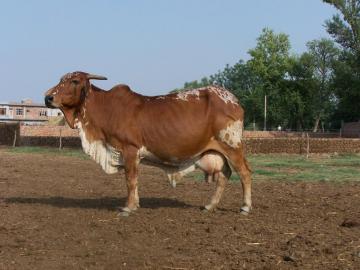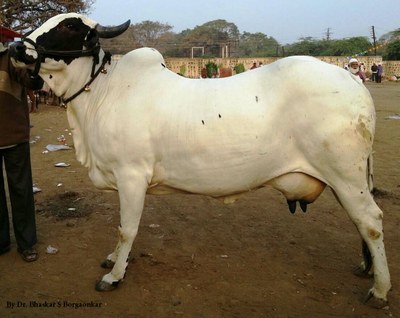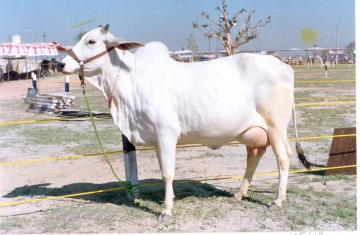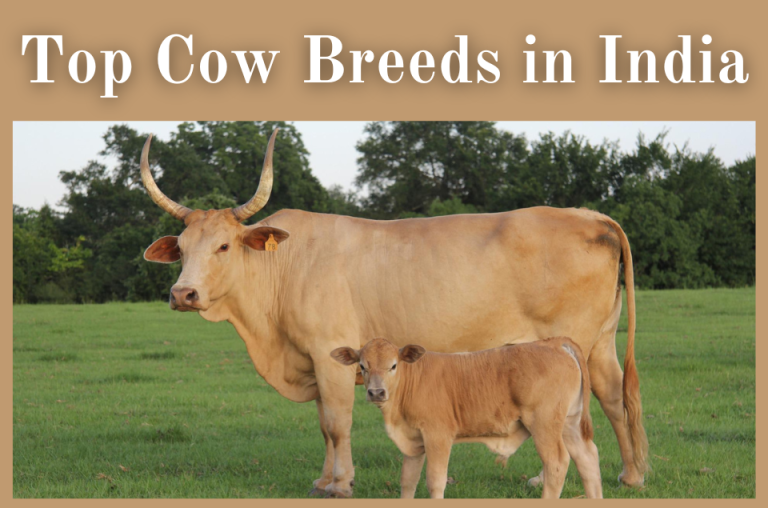Cattle are large, domesticated, cloven-hooved, herbivores. They are a prominent modern member of the subfamily Bovinae and the most widespread species of the genus Bos. Adult females are known as cows and adult males are referred to as bulls. In India, there are many top cow breeds used for diverse purposes. The Nelore farm animals, Brahman cattle, Guzerat cattle, and Zebu are the most popular breeds of cattle which have originated from India and South Asia. The best cow breed in milking in India include Sahiwal, Gir, Rathi, Tharparkar, and Red Sindhi and many more.
Farm animals have been a best source of income for people for ages. And if we talk about the present situation then cattle farming has to become a worthwhile business. Cattle are commonly raised as cattle for meat , milk, and for hides, which are used to make leather. They are used as using animals and draft animals oxen or bullocks, which pull carts, plows and any other implement. In some regions, along with parts of India, cattle have significant religious significance.
Here Are the Top 10 Cow Breeds in India:
Sahiwal
Sahiwal is one of the top 10 cow breeds in India. The cattle breed originated in the Montgomery area of undivided India. This cattle breed is referred to as Lola, Lambi Bar, Teli, Montgomery and Multani. They had been once kept in the large herd by professional herdsmen called “Junglies”. However, with the advent of irrigation to the area, they began to be kept in smaller numbers by the farmers of the region, who used them as draft and dairy animals.
Sahiwal is the best indigenous dairy breed in the country. The cows are brownish red in colour; shades may range from a mahogany red-brown to more greyish purple. Extremities in bulls are darker than the rest of the body colour. Occasionally there are white patches. It is tick-resistant, heat-tolerant and noted for its high resistance to parasites, each inner and external. It is likewise taken into consideration to be one of the best milch cattle breeds in India.
Cows average 2270 kg of milk during lactation while suckling a calf and much better milk yields were recorded. The common milk yield of Sahiwal is among 1400 & 2500 kilograms per lactation. It can be located in many elements of India like Haryana, Punjab, Delhi and Uttar Pradesh.
Gir
Gir is otherwise called Bhadawari, Desan, Gujarati, Kathiawari, Sorthi, and Surati. It was originated in Gir forests of South Kathiawar in Gujarat and also found in Maharashtra and adjacent Rajasthan. Gir cow is a world-best renowned breed known for its tolerance to strain conditions.
Having faced scarcity for some the years, it has the ability to yield more milk with much less feeding and is immune to diverse tropical diseases. The Basic colours of skin are white with dark crimson or chocolate-brown patches or sometimes black or merely crimson.
Their Horns are specially curved, giving a ‘half moon’ appearance. Gir breeds milk yield ranges from 1200-1800 kgs per lactation. In Brazil, they average 3500 kg per lactation, with a world record production of 17 120 kg by the cow Profana de Brasília.
Red Sindhi
The red sindhi is mostly found in Karachi & Hyderabad districts of neighbouring Pakistan. It is also called Sindhi and Red Karachi. The animals of the breed are big and heat tolerant. Cows of this breed are best milkers, and their milk ability is comparable to that of the Sahiwal breed.
A Red Sindhi cow is 116 cm tall and weighs 340 kg on average. Bulls stand 134 cm on the top and weigh 420 kg on average. The frame coloration of this farm animals breed is largely red with shades varying from darkish to red light and strips of white. Its milk yield degrees from 1100 to 2600 kilograms. Red Sindhi is broadly utilized in crossbreeding programmes.
The Red Sindhi breed has been exported to over 20 countries, including the United States, Australia, the Philippines, Brazil, and Sri Lanka, amongst others. In India, the breed is considered endangered since animals of the breed aren’t available in the field. Currently, the breed is only kept in some prepared herds across the country.
Jersey
Jersey is a British breed of small dairy cattle from Jersey, in the British Channel Islands. Because the Jersey cow is not an Indian breed, it is costlier than different desi cows like Gir, Sahiwal, etc. The Jersey cow is one of the top rarest cows in India. Jersey is small. Cows at the island weigh some 350–400 kg and stand approximately 115–120 cm on the withers; bulls weigh a few 600–seven-hundred kg.
It is highly productive. All purebred Jerseys have a lighter band around their muzzles, a darkish switch and black hooves. They are well known for their milk that’s noted for its excessive quality – it’s far particularly rich in protein, minerals and trace factors.
It is also rich in colour that’s naturally comprised of carotene, an extract from grasses. India, which produces more than 20% of world milk production, consumes Jersey cow milk mostly. This milk has more necessary factors than other ordinary cow milk. In local markets, it’s far hard to find high milk-producing Jersey cows.
Even after average quality, Jersey cows promote at expensive prices. In India, the Jersey cow milk price starts from 40 INR/kg to 80 INR/kg. The neighbourhood dairy sells them at high prices and packed Jersey cow milk holds common value.
Kankrej
Kankrej is an Indian breed of zebuine cattle. It originates from the arid region of the Rann of Kutch in the state of Gujarat, and in neighbouring Rajasthan. This cattle breed originated from Southeast Rann of Kutch, Gujarat and neighbouring Rajasthan.
From about 1870 onwards, Kankrej bulls and cows were exported to Brazil, where they were used to create the Guzerá breed, which changed into later among the breeds from which the American Brahman developed. The shade of the cattle varies from silver-grey to iron-grey/steel-black. They are active and strong.
Kankrej is quite popular as it is fast, powerful and draught cattle. It is used for ploughing and carting. The cow gives a mean of 1800kg of milk according to lactation. The average weight of bulls is 550-570kg and that of cows is 330-370kg. The common fat in milk production is 4.8%.
Rathi

Rathi is another milch farm animal breed this is found in the dry areas of Rajasthan. For the farmers in this area, this breed is a vital source of income. This breed is thought to have developed from an amalgamation of Sahiwal, Red Sindhi, Tharparkar and Dhanni breeds with an occurrence of Sahiwal blood.
Rathi farm animals are top medium-sized animals with white spots throughout their bodies and are generally brown in colour. They also can be located with a totally black or brown coat with white spots. The farm animals are green and best milkers. They produce 1560 kilograms of milk and the lactation milk yield ranges from 1062 to 2810 kilograms.
Krishna Valley

The Krishna Valley is an Indian breed of draught cattle. It originated in the regions drained by the Krishna, Ghataprabha and Malaprabha rivers. It has originated from the black cotton soil of the watershed of river Krishna in Karnataka & additionally observed in border districts of Maharashtra.
The cattle are huge in size, having a huge frame with deep, slackly constructed quick bodies. Its tail reaches nearly until the ground. The bullocks are very sturdy and therefore used for ploughing & valued for their top working qualities. The average yield is 900 kilograms per lactation.
Deoni

Deoni cattle is a local breed of India. It is likewise known by a few different names. Such as Deccani, Dongari, Dongarpati or Surti. Deoni cattle breed originated in the taluks of Basavakalyan, Bidar and Bhalki of Bidar district in Karnataka and adjoining Latur district of Maharashtra state.
It is a medium-sized animal which has a white body having irregular black colour spots on it. It has thin and loose skin, a huge head, thick and medium-sized horns, a deep and wide chest and long ears that are drooping. Deoni bullocks are preferred for heavy work and bullocks can effectively be used even up to 12 years of age.
Animals are maintained on a semi-in-depth management device and on grazing. The milk yield of deoni ranges from 636 – 1230 kilograms per lactation and their caving interval average are 447 days. The bullocks are used for heavy cultivation.
Ongole
Ongole cattle is an indigenous livestock breed that originates from the Prakasam District in the state of Andhra Pradesh in India. They are massive muscular cattle breeds with best well-developed humps. These livestock are usually used in bullfights in Mexico and a few parts of East Africa due to their energy and aggressiveness.
They additionally participate in conventional bullfights in Andhra Pradesh and Tamil Nadu. The Ongole is one of the heaviest breeds. Ongole cattle are known for their toughness, rapid increase rate, and herbal tolerance to tropical warmness and disease resistance.
It become the first top Indian breed of cattle to gain global recognition. They also are referred to as Nellore and their average milk yield is 1000 kilograms/lactation. Ongole milk has a butterfat content of over 5 per cent. This results in large, well-nourished calves with considerable growth by the point of weaning.
Hariana

Hariana is a breed originated from Rohtak, Jind, Hisar, & Gurgaon districts of Haryana but are equally popular in Uttar Pradesh, Punjab and parts of Madhya Pradesh. Horns are quick and the face is narrow and long.
The cows are fairly right milk yielders, and bulls are best at work. It is a vital dual-purpose, milch and draught, livestock breed of India Hariana cattle are top fair milkers yielding 600 – 800 kilograms of milk per lactation.
Conclusion
As for the conclusion these are some of the top cow breeds in India. These cow breeds are top quality breeds which give a high amount of milk with healthy nutrients. They are also some of the best workers for ploughing at extreme hot weather conditions.
Hi, This is Scoopearth’s admin profile. Scoopearth is a well-known Digital Media Platform. We share Very Authentic and Meaningful information based on Real facts and Verification related to start-ups, technology, Digital Marketing, Business and Finance.
Note: You can reach us at support@scoopearth.com with any further queries.
Linkedin Page : https://www.linkedin.com/company/scoopearth-com/
